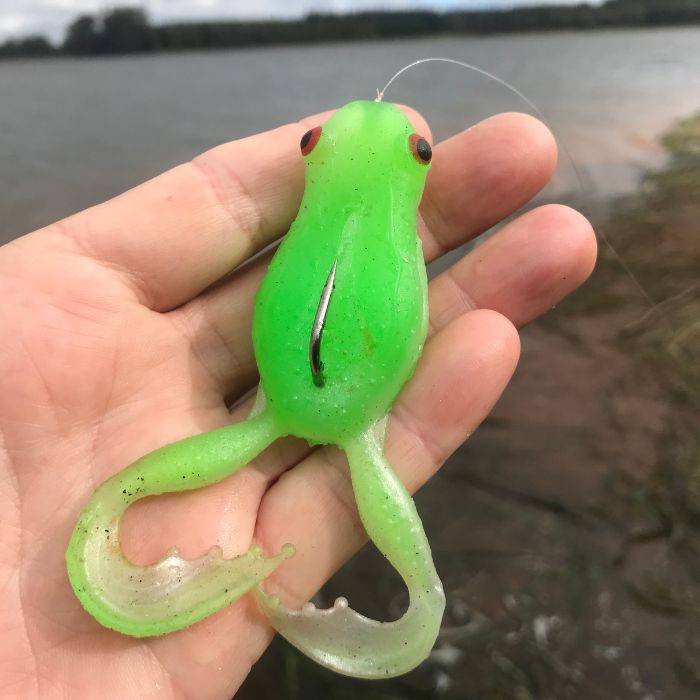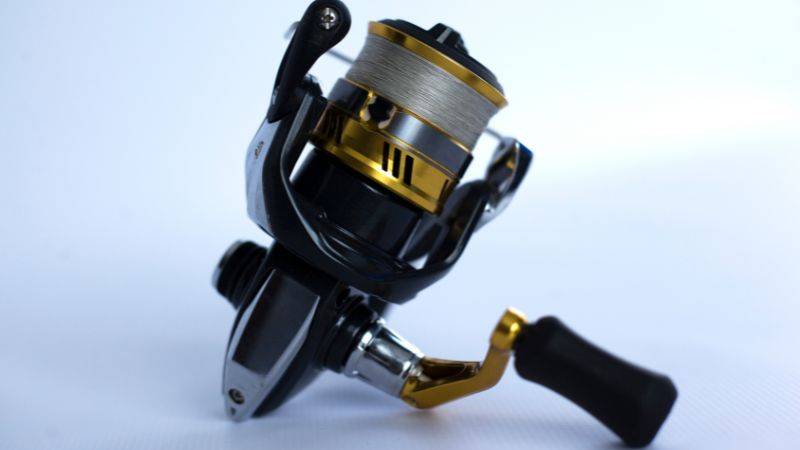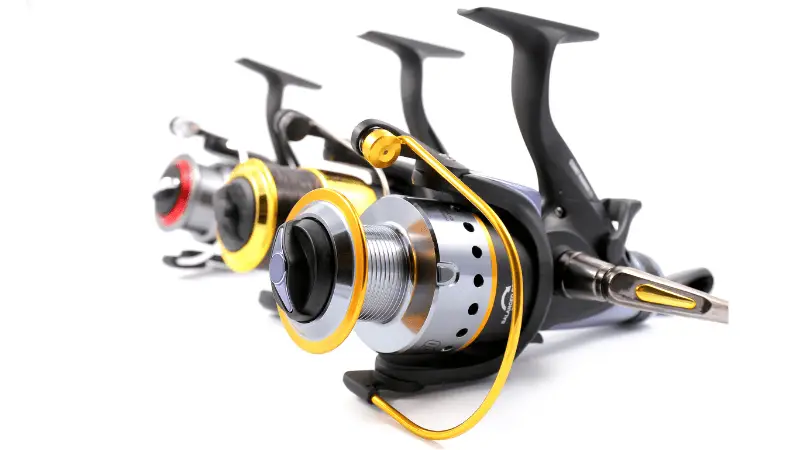Kayak fishing is great way to add additional fishing time on the water. It is also fun, but there can be a learning curve to it. So we have put together some kayak fishing tips and tricks.
These tips will benefit not only the beginner kayak fisherman and woman, but also the intermediate and advanced angler might pick up a tip, or at least remember a trick or hack they haven’t used in a while.
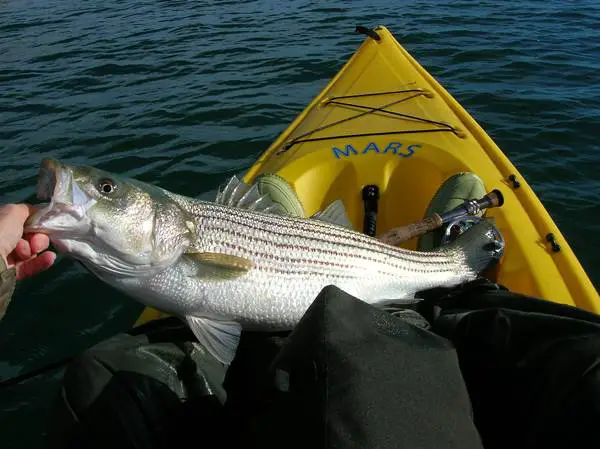
So here are over 27 tips for kayak fishing:
The Foam Swimming Pool Noodle
One kayak fishing tip is to use a swimming pool noodle for winding and storing the anchor rope around it.
Use around a foot or more of swimming pool noodle foam, this can also be used as a float if you do have to ditch your anchor.
A swimming pool noodle is also great for wrapping around and storing things like fishing trotlines, bank lines and fishing lures as the hook goes in the foam.
Pieces of the foam can be tied to fishing tackle, so if it goes overboard it will float. As an example I don’t like tethering my fly rod to the kayak, but I do tether it to some pool noodle foam so it floats.
I also store a swimming pool noodle in the hull of my fishing kayak, as this gives it extra buoyancy. And I can use pieces of it for improvising floats or cushioning.
Fish Near Structure
Fish were the fish are. Fish have certain needs, just like humans. We like food, shelter and comfort and this is no different to fish.
Places that supply these needs are generally good places to fish around like:
Weed beds
Submerged timber
Drop offs
Rocky beds
Reefs
Dam walls
Shade
Overhangs
Deep pools
Sheltered bends from the current
Piers and jetties
Channels
Inlets and outlets
Aquatic insects, food and small fish will live around cover like this as well. The bigger fish like bass, trout, salmon and other species of fish know this and will hang around or patrol these areas looking for food.
As well as food for the fish, these places also provide shelter from bigger fish, and other predators like birds and reptiles.
Comfort is important as well for the fish. If the water levels are too hot or cold, then the fish will move to a place they are more comfortable. Such as colder water or more oxygen in the water. This is sometimes why the fish can be found deep down, other times they are closer to the surface.
Fish will try and save energy in strong river currents, so sheltered bends and slow running deep pools can also harbor fish.
If the water is to muddy with little oxygen in it, the fish might be swimming around river outlets and inlets were the there is more oxygenated water for comfort.
Don’t tie the kayak up to an old submerged tree and fish in the open. But anchor out in the water and fish back towards the submerged tree.
So knowing these fundamental elements, fish around structures.
Use A Fish Finder
A fish finder is a great tool to have on a kayak. This not only allows you to find schools of fish, but it can also indicate the depth you are fishing and the contour of the bottom.
Fish finders a great way of finding structures the fish hang around as well.
The Anchor Trolley
Anchoring a kayak side on is dangerous as a wave might tip the kayak over.
An anchor trolley allows the kayak to be positioned in the water safely and helps you fish at the correct angle you want.
For the anchor trolley, a loop of cordage runs the length of the kayak from bow to stern on one side. The loop can be moved and this then moves where the anchor rope angles off the kayak.
You can easily change the direction your kayak is anchored. Normally from the bow or stern position or an angle off this, will allow you to fish in the direction you want to.
The anchor trolley is ideal to position the kayak in a good position for repetitive lure casting, or fly fishing where it is annoying to twist your body when casting.
Always wear a life jacket
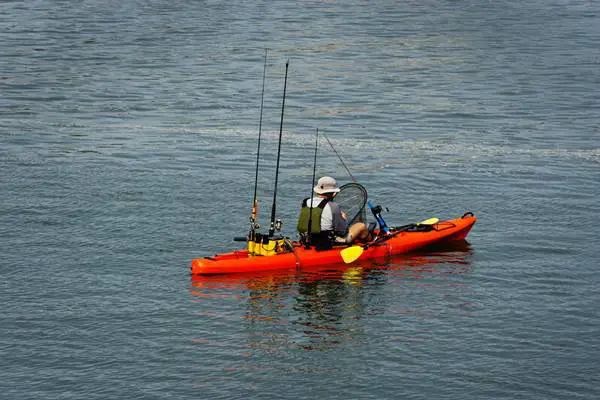
A life vest or PFD (Personal Flotation Device) should always be worn on a kayak or canoe.
Even in calm weather or if you are a good swimmer, wear the PFD for safety. As cold water and fatigue is dangerous.
I use a fishing life jacket with pockets, so it is handy to store fishing gear, like leaders, tippet material, hooks, etc.
Even if you do wear a wetsuit, still wear a PFD as the wetsuit may not be buoyant enough to keep your head above water in rough waters.
Start in calm waters
For those fisherman who are learning how to fish from a kayak, first start out in sheltered shallow waters. (Ideally warm water as well.)
Select a day that is not windy and ideally have your friend with you.
You might even not take any fishing rods as you just get used to paddling and maneuvering the kayak for a start.
When learning how to paddle, don’t go too far from the land and just practice turning the kayak stopping it and seeing how it feels.
Once you are comfortable in the kayak then put minimal fishing gear in it and just go a short distance away and practice casting and getting used to paddling and using the fishing equipment on board.
Launch from an easy spot
For beginners you should also launch the kayak from an easy spot as this makes getting in out of the kayak easier as well.
Sit in the kayak on land and organize your gear
When first setting up your kayak for fishing, sit in the kayak on land and organize your gear around you.
Sitting in the kayak, does make you realize how limited on space and movement you have. So you have to plan where to store and how to outfit the fishing gear and safety equipment wisely.
Place items you don’t use in the stern well at the back. Position items you use more in front or to the side of you. Like rods, tackle bag, etc.
Tether rods and fishing gear to the kayak or tether them on floats or foam.
A landing net can be a pain to store on a kayak. For one kayak set up, I sometimes placed my short landing net in a mesh pocket that is on the back of my seat.
For my other kayak set up, I use a long extendable big landing net. This net is placed in a crate in the stern well. I tether it with a large easy to use carabiner so I can unclip it easy when landing a fish.
For more information on setting up the kayak for fishing, click on – How To Outfit A Kayak For Fishing
Plan the fishing trip
To get the most out of the fishing trip, plan ahead by looking at maps and fishing apps to see where the good spots are on the lakes and rivers.
Look for deep pools and structures of where to fish.
With a map or app, measure how far from where you launch your vessel from to your fishing hot spot. On a map it may not seem that far. But when you load up the kayak with gear and there is a breeze against you, it seems further on the actual water when paddling.
Have a few back up fishing spots planned, in case the weather changes, or the fish aren’t biting.
Talk to local fisherman
Local fishermen have a wealth of information about where the best spots are.
Not everyone will tell you there hotspot, but some anglers will point you in the right direction or a general area.
Fishing clubs are good to get involved in, as not only fishing locations are discussed, but also different ways to rig up a rod, fishing techniques and what baits and lures are working well.
Park Rangers, fisheries and wildlife officers can also give you good information of where the fish are biting and current water levels and where to avoid. You can also double check the local boating and fishing rules for the area as well.
Local fishing shops are another source.
Boating fishing and kayak fishing forums are also other places where you can learn about some good fishing spots and techniques.
Pack the night before for more fishing time on the water
It is easy to forget your fishing tackle and kayak safety gear, especially if you wake up early for a fishing trip. So it is always good idea to pack the night before.
Use a checklist for the fishing gear and safety equipment.
Packing the night before also means you’re in less of a hurry in the morning and you can think more about what you do need. You have less chance of forgetting important items and you can check the weather forecast.
Paddle slowly, quietly and observe the water
I was guilty of quickly paddling one side of the lake to the other side. I always thought the fish were always were I wasn’t. So I would race over to another spot. The trouble with this was I was missing signs of fish and good places to fish.
Slow things down, paddle slowly and you will read the environment better. You might see trout rising feeding, or a hatch of insect that become food for the fish.
Also when you paddle quietly, especially in clear water you won’t spook the fish and you might even spot fish swimming around beneath.
In shallow waters, paddle slowly and quietly and observe the wildlife and look for any fish movement around.
Rushing around and you will miss signs like birds feeding on baitfish, weed beds, or the tide changing.
The kayak DIY milk crate to store your gear
A milk crate has been used by kayak fisherman for a long time, because it is common, cheap and does the job.
While it doesn’t hold a huge amount of gear, it drains the water well because of all the holes in it.
Mark fishing spots with a GPS
A GPS (Global Positions System) is handy for marking good fishing spots where you can come back later.
Remembering the same fishing spot months later is hard for me, so I mark it in the GPS as I may not remember exactly where it was.
A GPS is also a good idea for finding pre marked fishing spots in the dark, or at dusk or dawn as you may not be able to see any landmarks for a visual reference. It is very handy for getting back to your vehicle launch spot at night time.
Some fish finders also have built in GPS in them as well.
Tether your fishing gear
Bumpy rough waves or a capsized kayak can mean the end to your expensive fishing rod or tackle full if you don’t tether your fishing gear to the kayak.
Don’t use too long of a leash or tether, as it can get tangled up.
However, don’t use too short lead as you can’t use the gear and extend it out. An example of a short tether on a fishing rod makes it hard to cast and use.
Use marine grade stainless steel (so it won’t’ rust) carabiners or clips so you can easily unclip the tether item to use it, or if it gets tangled up.
Also use a floats and dry bags to make sure your gear won’t sink to the bottom if it gets knocked overboard.
Use dry bags
Dry bags are a fantastic way of storing your fishing kit and clothing so it doesn’t get wet.
You can get all sizes of dry bags which not only keep your gear dry but also will float if it goes overboard. Large dry bags can also be used as extra floatation as well.
Remember to also tether the dry bag to the storage crate, seat or kayak.
Dress for the conditions
In kayak fishing you probably will get wet. Such as when you are paddling, lifting the anchor, fighting the fish, or just from the sea spray.
There is a chance you won’t be completely dry at the end of the trip. So to safeguard the fishing trip is more fun, wear appropriate clothing.
In very cold weather and icy waters you might look at a wetsuit or even a dry suit.
Suitable clothing could mean light long sleeve clothing in hot weather.
On sunny days use a wide brimmed hat and polarized sunglasses to help protect you from the hot sun. This also makes spotting fish and submerged hazards in a water easier to see as well.
Wear paddling or fishing gloves and this not only protect your hands from the wind and sun, but also helps prevent blisters when paddling.
Regardless of what weather you fishing in, always dress like you might end up in the cold water.
Have extra layers of warm clothing in a dry bag and use a rain jacket to stop the wind chill and also to limit water splashing on you when paddling.
Accessing the storage hatch
With some kayaks the storage hatch is right down the bow end and it’s hard to get to. So practice getting to your storage hatch or dry hatch.
You might have to shimmy up the kayak to the bow. Practice this in calm water first and put items you don’t use much in here if it is hard to access.
Don’t always assume the dry hatch is completely waterproof as well. I have had a friend put his cell phone in a small storage hatch, thinking it would keep dry. Much to his surprise the compartment leaked. (The cell phone was okay, but wet.)
Always store valuables in in a dry bag as well, when in the storage hatch.
Select your days for good weather
When planning your fishing trip check the weather forecast. Obviously never go out in a rough or windy day.
Throughout the day fishing, check the weather to make sure it isn’t going to change.
Have back up fishing locations if the wind or weather changes. As an example, one bay might be calm, while the other bay is too exposed to fish in.
When on the water also look around for any dark clouds and see whether there is a storm coming in.
Have a spare torch
Even if you don’t plan on fishing at night, sometimes the fish are biting, or you lose track of the time, and next thing the daylight is fading fast.
Also launching the vessel early in the morning at dawn, it still might be dark.
Check the flashlight is working and have spare batteries for it. Ideally have a waterproof torch, but still check it for corrosion and make sure it works.
A headlamp is ideal for kayak fishing, as you can use it hands free while you paddle or change fishing tackle.
Do the hard leg first when kayaking
The wind or tide can be hard to paddle against back to the vehicle after a long hard day of kayak fishing. So plan on going against the wind or current first, when you are fresh.
For river fishing, like The Murray River, try to make the first leg of the trip against the current. Then it is easier on the way back with the river flow and less to paddle.
Also remember that tides will change and the wind direction and force can change at a drop of a hat. Think of Port Phillip Bay or Sydney Harbour.
Know your fitness levels for paddling
As well as using the window of tides, wind and current to your advantage, also know your limits and fitness levels when paddling.
After fishing for several hours it is easy to get tired and fatigued. So I always save some energy and allow enough time for paddling back to the vehicle, especially for fishing in big bodies of water or saltwater fishing.
Use chiller / cooler box
A cooler box is ideal for storing the fish you’re caught, but also for keeping your drinks and food cold.
You can even get some cooler boxes that are designed for kayak fishing that have fishing rod mounts on the side of the box for the rod holders.
Practice safety drills
Kayaking and kayak fishing do have some safety issues, especially in cold waters and windy areas. So it is a good idea to practice safety drills like re-entering your kayak, using a paddle float, or rescue throw bag.
Weight of the fishing kayak
While a big long stable kayak is comfortable and ideal in the water, realistically you have to transport it and get it on and off the vehicle. So kayak weight is an issue, even if you use a trailer, or two people to help.
Also a very heavy kayak may not to be able to be stored on your vehicle roof, or your roof racks might have a limit on them as well.
There are some good solid roof racks on the market like the Thule, Rhino and Yakima roof racks.
Use boating and kayak safety gear
Spend time arranging your safety gear for the kayak. This is one area where you need to get it organized.
Here are just a few items you might look at for your kit:
PFD and spare PFD in hull of kayak
EPIRB (Emergency Position Indicating Radio Beacon)
PLB (Personal Locator Beacon)
Marine radio
Cell phone in a dry bag
Safety whistle
Safety knife
Bilge pump
Bailing bucket or scoop
Rescue throw bag
Safety flag
Safety boating lights
Paddle float
Boat flares
Anchor and long rope
Spare two piece paddle
Have safety lights if you plan on night fishing. I mount mine on the safety flag and also have a spare flashlight as well and headlamp for night kayak fishing.
For a list of safety gear and more information, visit – Kayak Fishing Safety Equipment
Kayak fish with friends
Kayaking is great way to fish with friends as you can not only share the experiences and stories, but a fishing buddy is also a good idea for safety.
A fishing friend can also help you unload the kayak easier back on and off the vehicle roof racks, pick-up truck or trailer.
(And if you catch plenty of fish, they can help you clean your fish!)
Don’t overload the fishing kayak
A fishing kayak has a certain weight capacity that it’ll be perform best under.
If you overload the kayak it won’t paddle very easy or maneuver. The kayak will also ride very low in the water and there is more chance of getting wet by waves and spray as well.
Remember to factor in, not only the weight of you, but also all the extra fishing tackle and safety equipment as well. This can add up very easily in total weight.
Transporting a kayak
When transporting a kayak a long way, remember to pull over and check to make sure the tie downs are secure.
Use at least four tie down points to secure the fishing kayak.
Use two tie down straps over the hull of the kayak.
Also use a bow and stern tie down full stop this also stops the kayak from shifting or angling from the wind or moving backwards and forwards on the vehicle.
Don’t use ratchet straps, as these are too easier to over tighten and crack or warp the hull.
Remember the fishing licence
Carry your fishing licence on you and take a screen shot on your mobile phone of it as well. You might even send a copy to your fishing partner, in case your mobile goes flat or you lose your licence.
Check your local fishing and boating rules and regulations for catch size and fish limits.
Never take more fish than needed and remember to catch and release fish for future angling stocks.
Conclusion
We hope these kayak fishing tips and tricks will help you in your next fishing adventure.
With a bit of planning and a few fishing hacks and hints, you can hit the water safely and increase your chances of landing the big one.
Author: David Anderson
Check out this article for more kayak tips and info for beginners – 30 Kayak Fishing Tips For Beginners

